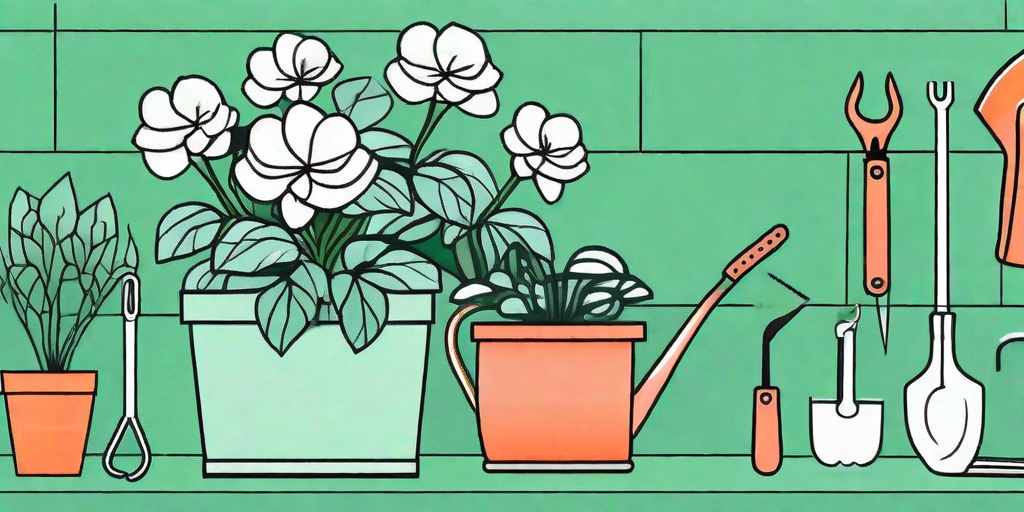
Whether you're a seasoned gardener or a novice, begonias are a fantastic addition to any garden or indoor plant collection. These vibrant, hardy plants can bring a splash of color to your space, and with the right care, they can thrive and bloom beautifully. But don't worry, you don't need to be a botanist to keep these beauties alive and kicking. With some simple tips and tricks, your begonias will be the envy of the neighborhood or, at the very least, your cat.
Understanding Your Begonias
Before we dive into the nitty-gritty of begonia care, let's take a moment to understand what we're dealing with. Begonias are a diverse group of plants, with over 1,800 species. They come in a variety of shapes, sizes, and colors, so there's a begonia for every taste. Some are grown for their flowers, others for their foliage. But regardless of their differences, all begonias share a few common needs.
Firstly, begonias are tropical plants. They love warm, humid environments. That's why they do so well in greenhouses and indoor spaces. Secondly, begonias are not big fans of direct sunlight. They prefer bright, indirect light. Too much sun can cause their leaves to scorch, and nobody wants a sunburnt begonia.
Types of Begonias
As mentioned earlier, there are many types of begonias. Some of the most popular include the Wax Begonia, Angel Wing Begonia, and the Rex Begonia. Each has its own unique characteristics and care requirements. For instance, the Wax Begonia is known for its glossy leaves and continuous flowering, while the Angel Wing Begonia gets its name from its large, wing-shaped leaves.
The Rex Begonia, on the other hand, is grown for its stunning foliage. Its leaves come in a variety of colors and patterns, making it a standout in any plant collection. However, Rex Begonias are a bit more demanding in terms of care. They require high humidity and well-draining soil to thrive.
How to Care for Your Begonias
Now that we've covered the basics, let's get down to business. Caring for begonias is not rocket science, but it does require some attention to detail. Here's a step-by-step guide to keeping your begonias happy and healthy.
Step 1: Choose the Right Location
Remember, begonias are not sun worshippers. They prefer bright, indirect light. So, choose a location that gets plenty of light, but not direct sunlight. An east or north-facing window is ideal for indoor begonias. For outdoor begonias, choose a spot that gets morning sun and afternoon shade.
Also, consider the temperature. Begonias are tropical plants, so they prefer warm temperatures. They can tolerate temperatures as low as 60°F (15°C), but they thrive in temperatures between 70°F (21°C) and 85°F (29°C).
Step 2: Water Wisely
Begonias like to stay hydrated, but they don't like to be waterlogged. Overwatering is a common cause of begonia demise. To avoid this, water your begonias when the top inch of soil feels dry to the touch. And make sure to use a well-draining soil to prevent water from pooling around the roots.
When watering, try to avoid getting water on the leaves. This can lead to leaf spot and other fungal diseases. Instead, water at the base of the plant.
Step 3: Feed Your Begonias
Begonias are not heavy feeders, but they do appreciate a little snack now and then. During the growing season (spring and summer), feed your begonias every two weeks with a balanced houseplant fertilizer. In the fall and winter, you can cut back to feeding once a month.
Remember, less is more when it comes to feeding begonias. Too much fertilizer can lead to salt buildup in the soil, which can damage the roots.
Common Begonia Problems and How to Solve Them
Even with the best care, begonias can sometimes run into problems. But don't panic! Most begonia problems are easy to fix. Here are some common issues and how to solve them.
Problem: Yellow Leaves
Yellow leaves can be a sign of overwatering. If your begonia's leaves are turning yellow, check the soil. If it's soggy, cut back on watering. If the problem persists, you may need to repot your begonia in fresh, well-draining soil.
Yellow leaves can also be a sign of nutrient deficiency. If the soil is not soggy, try feeding your begonia with a balanced houseplant fertilizer.
Problem: Brown Leaf Tips
Brown leaf tips can be a sign of low humidity. Remember, begonias are tropical plants. They love humid environments. If your home is dry, try placing your begonia on a tray of pebbles filled with water. The evaporating water will increase the humidity around the plant.
Brown leaf tips can also be a sign of over-fertilization. If you've been feeding your begonia regularly, try cutting back on fertilizer.
Frequently Asked Questions
- Do begonias need a lot of sunlight?
No, begonias prefer bright, indirect light. Too much direct sunlight can scorch their leaves.
- How often should I water my begonias?
Water your begonias when the top inch of soil feels dry to the touch. Avoid overwatering, as this can lead to root rot.
- Do begonias like to be root bound?
Yes, begonias prefer to be slightly root bound. They do not need to be repotted often, usually only every 2-3 years.
So, there you have it. With these tips in hand, you're well on your way to becoming a begonia whisperer. Remember, every plant is unique and may require slight adjustments in care. But with a little patience and a lot of love, your begonias will thrive. Happy gardening!















